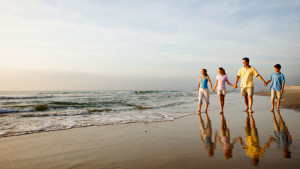For 27 years, George and Joan Eiszele, members of the Glenorchy Seventh-day Adventist church in Tasmania, have assisted refugees settle and begin a new life in Australia.
Although they’re both now retired, they were still working full time when they began. Since 1978, they’ve resettled people from almost every strife-affected country of the world.
Many of these people stepped from a plane carrying little or nothing, but most were weighed down with the baggage of the horrors from which they’d fled—stories of rape, torture, narrow escapes and hunger. Joan and George always felt it a privilege to be able to help such people, and get to know them as friends. They’ve assisted more than 300 to date.
To be “relocated” as a refugee in a strange land with a different climate and culture, without friends or relatives to assist is hard. Joan, now 78, and George, a little older, do whatever it takes to make them feel “at home.” Before a refugee arrives, they purchase basic personal and family needs from a Government cheque of $1000. Beds and bedding, cutlery and crockery, pots and pans, are first on the list. Added to this are personal needs, such as underwear and appropriate clothing, all of which must be new. Some items are donated and stored in a shed adjacent to their Glenorchy church. George’s own backyard shed is full to overflowing. He spends a lot of his time repairing used furniture, which is added to the “basics,” giving a little more comfort in the home of the refugee.
When they meet the newly arrived refugees, Joan and George first take them to a supermarket for food supplies, then take them to their new home. The following day, they go shopping for clothing. Communicating with the new arrivals was sometimes a problem, so Joan learned Spanish, which she says has helped her enormously. They now have friends from Nicaragua, Chile, Uruguay, El Salvador, Zambia, Botswana, Ethiopia, Sudan, Cook Islands, China, North Korea, the Philippines and Solomon Islands, to name but some.
Some of the Spanish-speaking refugees began attending church with her. This group grew until they decided they needed their own Spanish-speaking church, so they met in a rented hall.
Eventually they were offered a quaint stone church in Hobart. The church was once a Congregational church, built in 1872. It contains a beautiful pipe organ, which dates from the same period. The church had been purchased by a private organisation, which lets it for a token rent to the former refugees.
When they formally took possession, the Hobart Multi Cultural Church, it was the Governor of Tasmania, His Excellency the Honourable William Cox, who cut the ribbon. The church is much more than a church; it’s a centre for refugees. It’s a church on Saturdays, when up to 150 people from varied countries meet to worship, but during the week it offers English-language classes, counselling to combat the trauma of war, and provides legal orientation.
And do the near octogenarians Joan and George have any plans for retirement? No! For George and Joan, this is retirement—helping others.





